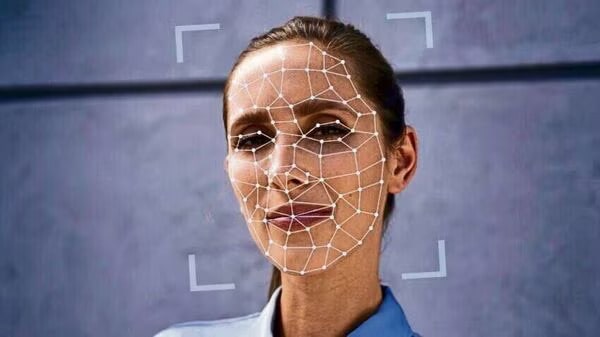“People are not used to generative technology. It’s not like it evolved gradually; it was like ‘boom’, and all of a sudden it’s here. So you don’t have the level of skepticism that you would need.” – Cynthia Rudin, AI computer scientist.
With the use of Generative-AI, the world of true lies has just gotten murkier. India finds itself at the crossroads of a technological dilemma, with the resurgence of concerns surrounding artificial intelligence (AI) regulation. Triggered by a police complaint filed by Indian actress Rashmika Mandanna, over a viral deepfake video and with multiple actors getting tangled in the AI trickery, India’s problems with the escalating and targeted threats posed by the deepfake technology have resurfaced.
What are deep fakes?
Deepfakes, the deceptive offspring of AI, have evolved unimaginably beyond the mere novelties of the digital age. They are digitally manipulated videos that alter someone’s appearance, blurring the lines between reality and fiction, often with harmful intent. It is a mere tool for deception. Unlike Photoshop, deepfakes leverage machine learning to create manipulative content. These sophisticated manipulations, capable of creating convincing videos and images, raise pressing questions about privacy, consent, and the ominous risk of misuse. You might claim ignorance, but the chances are slimmer than a pixel when it comes to avoiding these digital shape-shifters.
The dual face of deepfakes
India ranks sixth in vulnerability to deepfakes, as per this year’s State of Deepfakes report (Source: India Today). Yet, despite the looming threats, deepfakes have etched their place in the creative realm, contributing to heartwarming moments like Shah Rukh Khan’s personalized Cadbury’s ad campaign and the completion of Fast and Furious 7 after the untimely demise of legendary actor Paul Walker. Museums and galleries embrace deepfakes to resurrect historical figures, and the technology even serves noble purposes such as anonymizing journalists in oppressive regimes. However, the precarious balance between positive and malicious applications remains ambiguous, stirring profound legal, ethical, and social concerns, notably in the absence of widespread regulations. A case in point is the October 2023, incident where a deepfake video of Elon Musk propagated false cryptocurrency claims, leading to financial losses for many. Furthermore, the escalating use of deepfakes in online gendered violence, particularly in the form of revenge pornography, is a growing worry. Ultimately, despite its occasional positive contributions, the technology tilts the scale towards harm, eroding our fundamental grasp of reality.
A threat to India’s democratic election process
Owing to generative technology, election campaigning has moved beyond just extravagant posters to include AI-generated fake videos. With the upcoming Lok Sabha elections in India in 2024- anticipated to be the largest yet- the potential impact of deceptive deepfakes on the democratic process and their ability to sway voter sentiments cannot be ignored. Political parties could be both creators and victims of the spreading misinformation. A humorous deepfake about a public figure could swiftly transform from a joke to a harmful manipulation. For instance, a set of AI images went viral on Twitter depicting former president Donald Trump being arrested before his indictment, gathering nearly 5 million views within a couple days. India encountered its inaugural challenge of AI intervention in the 2020 Delhi Assembly polls, when users discovered videos featuring then-state BJP chief, Manoj Tiwari, criticizing CM Arvind Kejriwal’s policies in various languages. The Massachusetts Institute of Technology (MIT) confirmed that these videos were AI-generated. The absence of deepfake concerns during India’s 2019 general elections has transformed due to the surge in smartphone users exceeding 650 million and the growing accessibility of affordable high-speed internet in 2023. This scenario heightens the perils of misinformation, posing a serious threat to India’s young electoral base. So it won’t be incorrect to say that such content can now easily influence the elections by manipulating public opinion and eroding trust in political figures – one WhatsApp forward at a time.
In a report by Outlook India, S.Y. Quraishi, the former Chief Election Commissioner of India, addressed a significant challenge confronting the Election Commission of India (ECI). He underscored the swift propagation of misinformation facilitated by deepfakes and advised the country’s election watchdog to maintain autonomy separate from the endeavors of the Information Technology (IT) ministry.
Some of the deepfakes can come from the ruling parties as well. So, although an alliance between the ECI and the IT Ministry sounds good on paper, there’s always a possibility of collusion, or people in power keeping their eyes closed. So, it’s the ECI’s credibility at stake.
– S.Y. Quraishi, former CEC India (as quoted by Outlook India)
AI: a double-edged sword?
The paradox of AI being crucial in addressing deepfake challenges becomes evident as AI-powered detection systems are currently under development. After all, in a world where your own eyes are on the verge of a trust crisis, who better to put your faith in than a machine? Because nothing says reliability like circuits and algorithms, right? The central problem lies in the fact that deepfakes are convincing enough to fool humans. As technology relentlessly reveals our daily inefficiencies, researchers worldwide are on a quest to create AI tools that can outsmart the AI responsible for cooking up these deceptive deepfakes. It’s like fighting fire with artificial fire, but in a tech-savvy way. AI algorithms can detect and flag deep false content by analyzing indicators such as a person’s heartbeat, enabling authorities to promptly intervene. However, given the potential for inaccuracies, particularly in flagging genuine content, it is important to develop robust algorithms capable of discerning between authentic and counterfeit material. The significant challenge, favoring wrongdoers, stems from the insufficient availability of vast datasets essential for training machine-learning models. So while the good guys find themselves craving an abundance of deepfakes for training purposes, the troublemakers only require a perfectly timed video at the right moment. Ironically, the very tools employed to enhance detectors today might just end up schooling the next batch of mischievous deepfakes. So, as much as individual awareness is crucial, the grand finale of this cat-and-mouse spectacle will likely hinge on the big tech players stepping up to the plate.
India’s actionable plan
From surfacing in 2017 on Reddit to being ranked as the most serious AI crime threats, laws around deepfakes are still not solid. Yet, even though Indian laws do not explicitly mention deepfake technology or directly confront its complexities, the existence of certain legal provisions under The Indian Penal Code, The Information Technology Act, 2000, and The Copyright Act, 1957, addresses its misuse and holds the responsible accountable. Notably, India’s IT rules from 2021 mandate that intermediary platforms remove content produced through deepfake technology within 36 hours of reporting. Some experts argue that while government oversight can mitigate misuse and ethical concerns, excessive regulation may impede technological progress. This underscores the importance of investing in algorithms for deepfake detection, emphasizing proactive measures over reactive approaches.
Hence, a strategic partnership between the Indian government and stakeholders in the tech industry becomes crucial in establishing a robust defense against this emerging threat. Following a meeting with leading social media platforms and AI companies on November 23, Ashwini Vaishnaw, the Union Minister of Electronics and Information Technology, announced that the government will devise a “clear, actionable plan” within the next 10 days to counter the proliferation of deepfakes, referring to it as a “new threat to democracy.” The forthcoming strategic plan is anticipated to focus on four key pillars: deepfake and misinformation detection, prevention of their dissemination, reinforcement of reporting mechanisms, and heightened public awareness. Whether brought in through a new law or amendments to existing ones, these regulations are expected to undergo a public consultation, according to Vaishnaw.
The professors who were involved in the meeting clearly made the point that it is no longer a difficult task to detect deepfakes. All platforms agreed that it is possible to do (the detection) within the privacy framework we have all over the world.
– Union IT Minister, Ashwini Vaishnaw
Strongly advocating for a proactive stance from social media platforms in tackling deepfake content, Vaishnaw underscored that the ‘Safe Harbour’ provision, previously protecting these platforms, could be reconsidered if they don’t take sufficient measures against deepfakes. During the meeting, social media companies acknowledged the importance of labeling and watermarking for identifying and eliminating harmful deepfake visuals. With the upcoming December meeting, there is optimism for the implementation of more stringent rules to address the growing threat India faces from this deceptive phenomenon.
Read Also: Deocoding Deceptive-Deepfake
Featured Image Credits: Mint
Manvi Goel





Comments are closed.